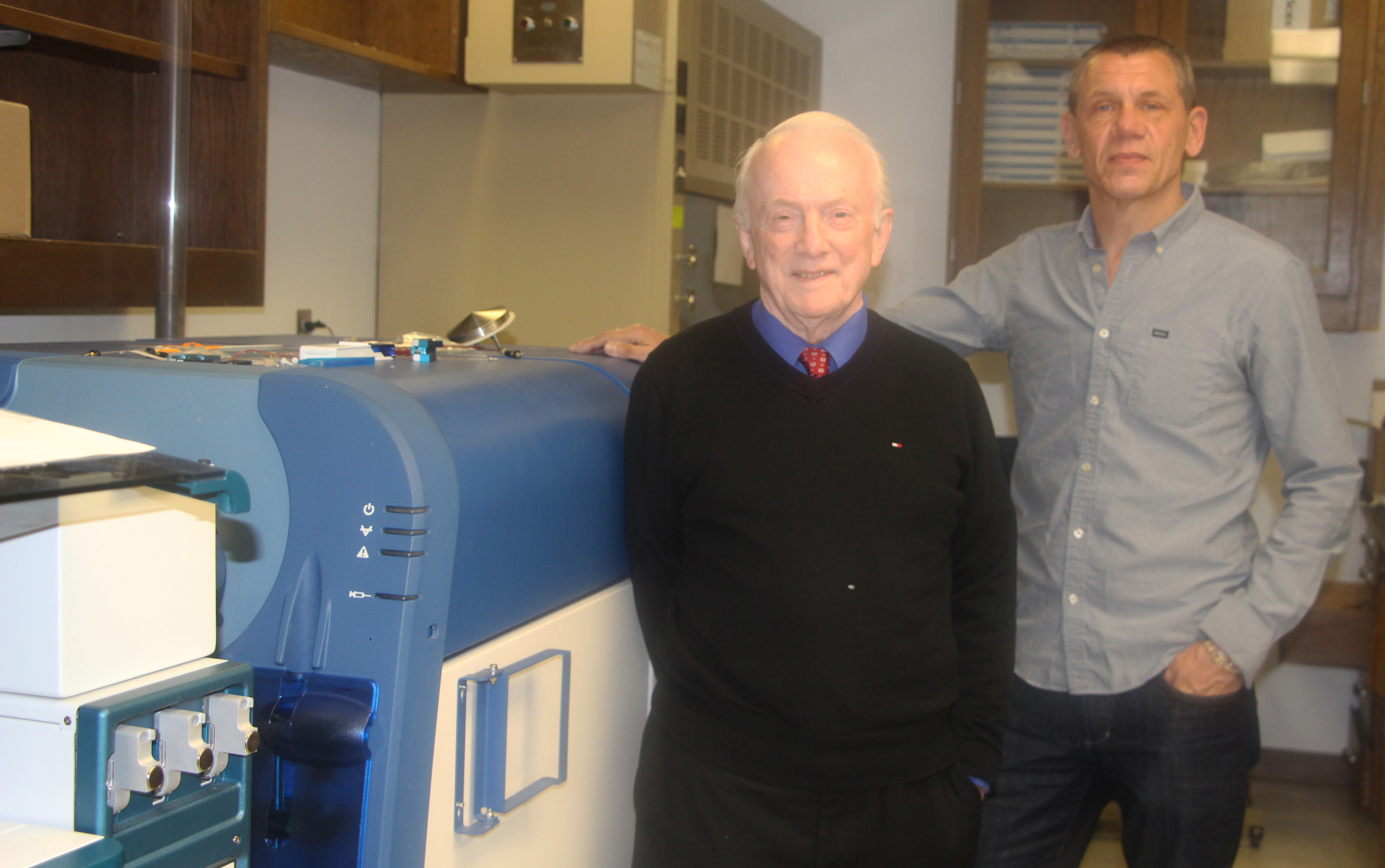 MALDI--matrix-assisted laser desorption ionization--imaging mass spectrometry is now available to researchers at UAB. Drs. Stephen Barnes and Janusz Kabarowski used the tissue imaging method in their recent research "Early lipid changes in acute kidney injury using SWATH lipidomics coupled with MALDI tissue imaging."
MALDI--matrix-assisted laser desorption ionization--imaging mass spectrometry is now available to researchers at UAB. Drs. Stephen Barnes and Janusz Kabarowski used the tissue imaging method in their recent research "Early lipid changes in acute kidney injury using SWATH lipidomics coupled with MALDI tissue imaging." Kabarowski and Barnes first used SWATH lipidomics to examine the levels of extracted lipids from injured mouse kidneys and ultimately determined the proximal tubules of the kidney as the place where the ether-linked phospholipids identified were concentrated. The proximal tubules are known to be most prone to developing ischemia-related injury.
MALDI tissue imaging is a powerful tool now available to researchers at UAB. “The opportunities to integrate this into an existing UAB research core center to facilitate innovative research and promote new research grants is immense,” Kabarowski said. “It can be utilized to study and form of tissue damage and inflammation. For drugs that can be imaged with MALDI imaging mass spectrometry, you can tell where exactly in the tissue the drug gets to, with obvious implications for testing candidate therapeutic agents in cancer research too. We can capture — at the molecular level — a moment in time.”
Read More:
Early lipid changes in acute kidney injury using SWATH lipidomics coupled with MALDI tissue imaging
UAB Tissue Imaging Mass Spectrometry detects early lipid changes in acute kidney injury